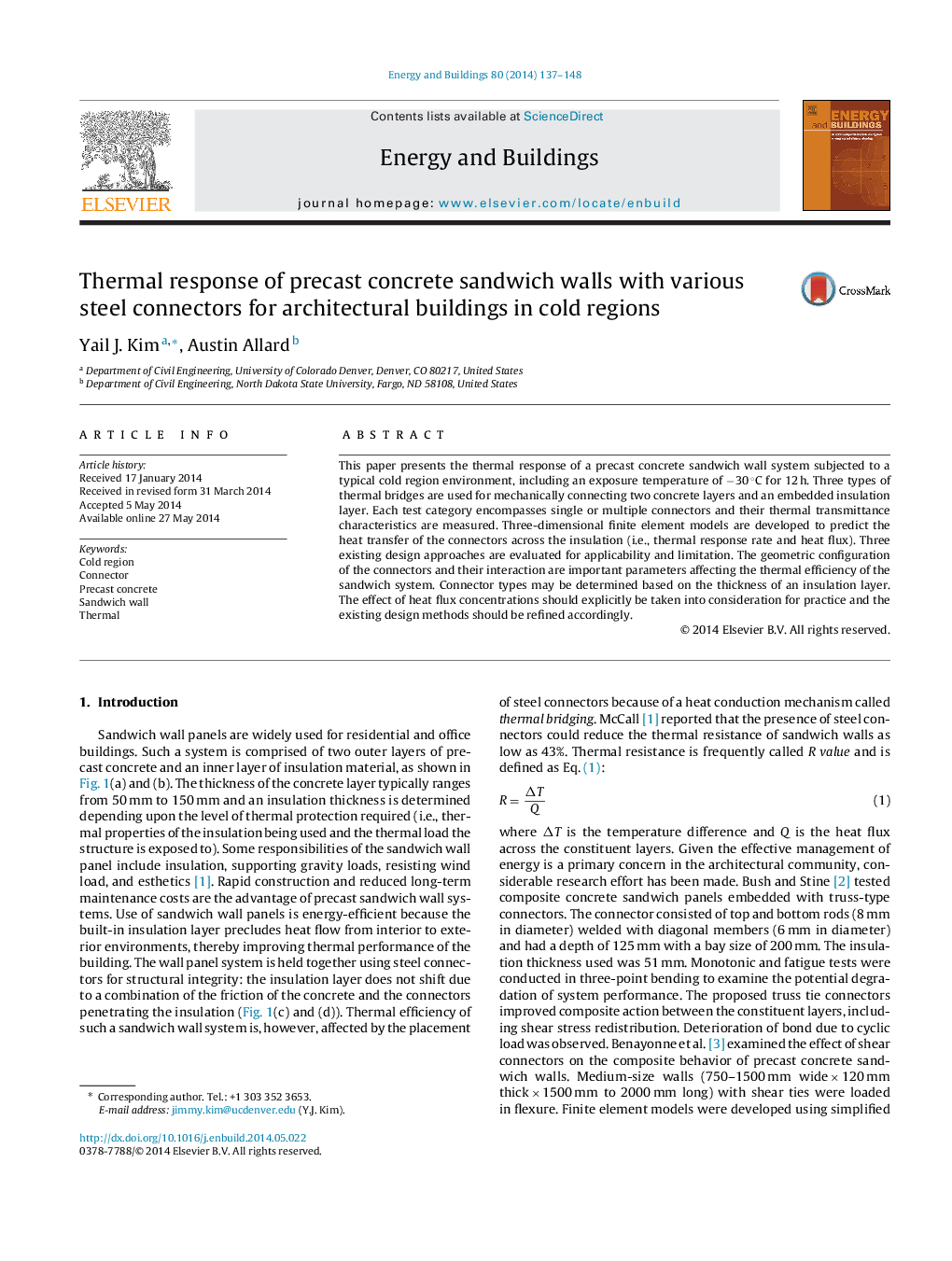| Article ID | Journal | Published Year | Pages | File Type |
|---|---|---|---|---|
| 262762 | Energy and Buildings | 2014 | 12 Pages |
•Thermal response of a precast concrete sandwich wall system is studied when subjected to a typical cold region environment.•Three-dimensional finite element models are developed to predict the heat transfer of mechanical connectors across the insulation.•Three existing design approaches are evaluated for applicability and limitation.
This paper presents the thermal response of a precast concrete sandwich wall system subjected to a typical cold region environment, including an exposure temperature of −30 °C for 12 h. Three types of thermal bridges are used for mechanically connecting two concrete layers and an embedded insulation layer. Each test category encompasses single or multiple connectors and their thermal transmittance characteristics are measured. Three-dimensional finite element models are developed to predict the heat transfer of the connectors across the insulation (i.e., thermal response rate and heat flux). Three existing design approaches are evaluated for applicability and limitation. The geometric configuration of the connectors and their interaction are important parameters affecting the thermal efficiency of the sandwich system. Connector types may be determined based on the thickness of an insulation layer. The effect of heat flux concentrations should explicitly be taken into consideration for practice and the existing design methods should be refined accordingly.
